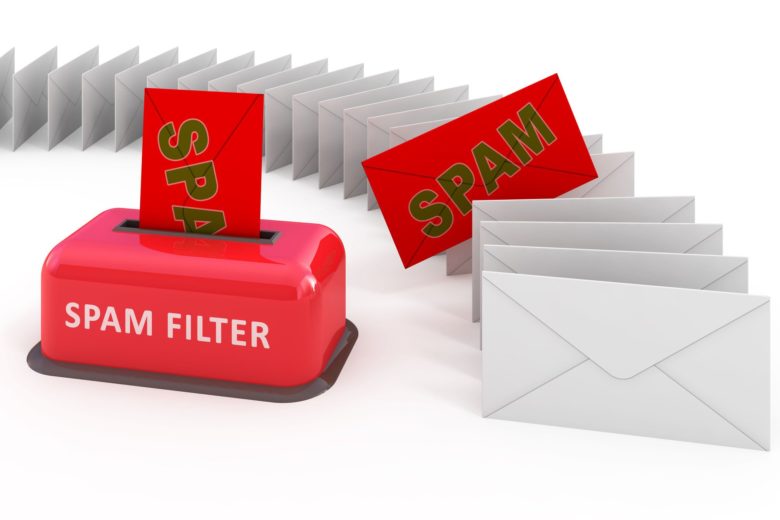Spam is increasingly becoming a larger and larger threat, thanks to the more sophisticated ways spammers are creating to bypass the protection. Granted, people in charge of protecting us from spam aren’t sitting idly and are also coming up with new ways of preventing spam reaching our inboxes.
What is spam
The unsolicited emails, or spam, have been around for a long time. Some would say that it was born at the same moment email was created. To be honest, spam existed even before computers were invented, let alone electronic mail. In the old days, it was just sent via ordinary mail. The Internet and emails have only made it easier for spammers to go about their business. Also, their costs of operation have gone significantly down, since sending millions of emails cost them practically nothing. The bandwidth they use is usually paid for by the recipients and carriers. All they have to do is find enough email addresses to send their messages to.
How do spammers get my email
This is done in several ways. According to duocircle.

Preventing spam
There are several ways of preventing spam. One of the oldest ones is using blacklists. These lists contain IP addresses or emails that are known to be involved in spamming activities and block them automatically. They work excellently with known threats. Unfortunately, they are helpless against new ones. And since spammers can easily use a different address or change their IP, they can use new ones every day, bypassing blacklists entirely.
The other way is using filters. These are adaptive programs that look for keywords. Depending on the settings, they can protect you and your employees from various threats, including phishing scams, pyramid schemes, identity theft, and others. Any message containing suspicious content, whether in the body of an email or as an attachment, gets flagged and sent to the spam folder.
Domain administration is a method that allows administrators to migrate entire email systems by simply adding it to the anti-spam filters. This way they don’t have to manually enter each email address, which can be a time-consuming process for larger entities.
Reporting is another anti-spam measure that is essential in policing the web and preventing spammers. It provides critical intelligence and allows developers to keep blacklists and filters up to date.
Recently, many companies are opting for cloud spam filters as the go-to solution for email protection. While a number of commercial solutions is available, they require a certain level of expertise to install and run properly, and not many companies have such staff on their payrolls. Cloud solutions simply bypass that requirement by allowing you to use their services without a single IT worker in your company. You won’t need to but anything, have it installed on your mail servers, tweak it regularly and implement updates. You also won’t have to hire expensive IT experts to monitor the entire operation and perform all of the above tasks. Cloud spam filters are a much more elegant solution.
Pricing
According to Course5i, moving anti-spam protection to the cloud has proven to be an affordable solution. It is certainly cheaper than developing and deploying an in-house solution. Cloud solution costs a fraction of the cost of just running such an operation, let alone developing it or buying one off the shelf. They are usually based on a subscription, with many options, like the number of mailboxes or other features included in the plan. They also have several other benefits that directly translate to reduced costs.
Intercepting spam before reaching the network
This may sound trivial, but it is a critical process that makes cloud spam filters highly effective. They stop spam and bounce it using their own servers, long before they even reach your network. This way, they minimize the amount of spam on your servers and also prevent other threats, like email cyber attacks.

Reduced traffic
Reduced traffic means less bandwidth your company is using, which is a direct saving measure. Cloud filters achieve this by intercepting spam before they reach your network. Less spam on your servers, less bandwidth you use. Considering around 90% of all emails are spam, it is easy to see how this adds up to a significant cost reduction. Another benefit is that you aren’t hosting anti-spam solutions on your servers, which can be a significant reduction in bandwidth.
Better and Faster Response
Spammers aren’t just sitting and watching their emails getting bounced. They are also designing and deploying counter-measures that would help them penetrating anti-spam protection. Online spam filters will detect and react to these new threats far faster than any solution on the market. The key here is volume. Cloud systems handle a vast amount of spam every day, making it easier for them to recognize emerging patterns and adapt to changes. This makes them very effective in their job.
Better Technical Support
Companies offering cloud spam protection keep technical support running 24/7. With this around the clock coverage, any problem you may encounter will be resolved swiftly and capably. Unlike in-house systems, where technical support is either slim or even non-existent, cloud systems have to respond quickly to any complaint they receive, in order to keep their entire network functioning.
With all these in mind, it is easy to see why cloud spam filters are becoming increasingly popular. Off the shelf solutions simply can’t compete with cloud-based ones. They are faster, better, and provide a myriad of benefits out of the box providers simply can’t match.




